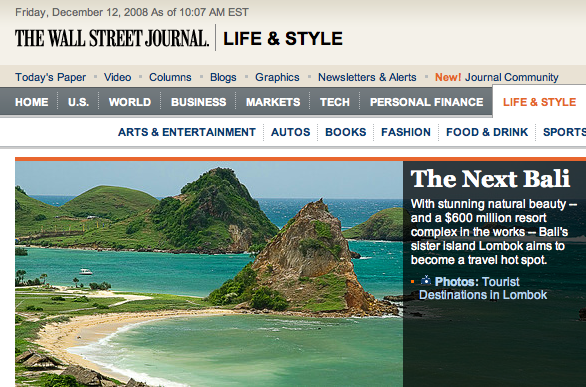Hey, Andy: Assault on the Battery Will Push Newspapers Over The Edge

Funny thing, how Sam Zell didn’t come hat in hand to Washington, D.C., this week, when his Tribune Co. hit the wall. He just filed for bankruptcy on his newspaper company and said: This is a pre-emptive action, to preserve assets. Too bad automakers can’t be as decisive.
There may be more of the same to come in the newspaper world. This should not be surprising. Newspapers saw the rise of the interactive, online media a quarter century ago. Think CompuServe and The Source. The impact on classified advertising in particular was predictable, even if you couldn’t foresee it would be a two-man shop like Craigslist.
Like Detroit, the newspaper industry’s giants avoided getting ahead of the game, preferring to milk what they had and hope somehow that electronic threats to their survival would go away.
Now, while this is somewhat facetious, there is also more than a little bit of truth in this assertion: the only two things that remain to prop up the print editions of even the best brands in the newspaper business are batteries and coffee.
The computing industry, for all its sustained ability to create spectacular year after year, decade after decade improvement in processing power on its thumbnail chips and storage power, in everything from stick drives on up, has not been able to produce similar gains in battery power. Nor, with few exceptions, make it part of the basic design of its machines to protect internal circuitry (particularly on laptops) from spillage. From the all-too-frequent accidents involving liquids at the home, office, airplane and other desks and tables that suddenly ruin $1,000, $2,000 and $3,000 machines.
This morning, on a cold, rainy morning, the New York Times showed once again that it is not capable of consistently delivering its deadwood edition to my driveway by the “guaranteed” time of 6:30 a.m. Unfortunately for me, the Times also delivers the Wall Street Journal. So it’s hit or miss for both. And who has the time to trace the problem?
The point being: This time I decided not to bother with the print editions. It’s far easier to just flip open a laptop at the kitchen table and dig in to news and opinions on the Times, Journal and anywhere else without stepping out into the drizzle to sate some kind of historic habit to hold the pages that so many writers, editors and designers have labored to make perfect. They can just as well devote the time to great presentation online.
But my brand new MacBook Air does not live up anywhere close to the 4.5 hours of “wireless productivity” promised by Apple.
After little more than an hour, I have to grab the power cord and plug it into a wall socket near the kitchen table and start recharging. This of course increases the probability that the one lasting problem of the computer-based news experience (low battery life) will lead to the other (spillage). If I trip on that cord with coffee in hand …
In fact, generally I rest liquids in their cups on the floor, when using a computer. But if I am going to make the switch to reading newspapers’ sites online, I am going to want to feel comfortable keeping that cup of coffee on top of the table. That’s one habit that for almost everybody will trump technical issues, long-term.
So here comes Andy Grove in today’s Journal saying that Intel should help rescue the auto industry by creating advanced batteries. For cars! Hello, let’s start with really serious, sustained improvement in battery life for computers, first. That’s your business.
And I think Gordon Moore uttered what came to be known as Moore’s Law (computer power will double every two years) in 1965 and then went ahead and founded Intel in 1968, largely counting on that principle. Now, maybe Andy and Gordon should recast it, and found a battery company together. Like the computing problem first.
Hey, if you solve that one, maybe you can extend that to autos. But start in the industry you knew, that you were key to building – and which has much greater immediate and long-term growth promise. Electric cars can wait. And benefit from what you find, anyway.
Meanwhile, it should not be a special feature to include a “spillproof keyboard” in laptops that are then designated “rugged” or “semi-rugged.” Just as Webcams and digital mikes are standard characteristics of under-$1,000 laptops, so should coffee and soda protection be.
Of course, if Intel’s founders devoted themselves to solving both the battery and coffee problem, on a continually lower-cost and constantly-improving-performance basis, there would be no legs left to prop up the printed newspaper industry.
Computer screens already make it brighter and easier to read news online. The paper editions of the Times and Journal – the best papers out there, IMHO – sitting next to this computer look dull and uninviting by comparison. You almost have to stand up to flip pages to get the full effect of some of the best photos (I was already sold on Lompok, online)(See image at top of this post, from WSJ.com).
Thankfully, the Times and the Journal sites are rich. In fact, richer than the print versions. You can turn every page of the purported print edition just as fast as in paper, now, if you have a good connection. And you have access to interactive graphics, videos, past news, other sites and much more information online, than in print.
You could, in fact, get lost in the depth and breadth of the online “newspaper” world, every morning. The last saving grace of print is concision. As big as the Times and Journal are (currently), they are last night’s digests of what’s going on in the world. They’re finite. And instantly out of date.
So, maybe Andy and Gordon won’t want to solve the battery and coffee problems.
If they do, they’ll have kicked out the last two legs left propping up the newspapers (sometimes) delivered to your door or driveway.
